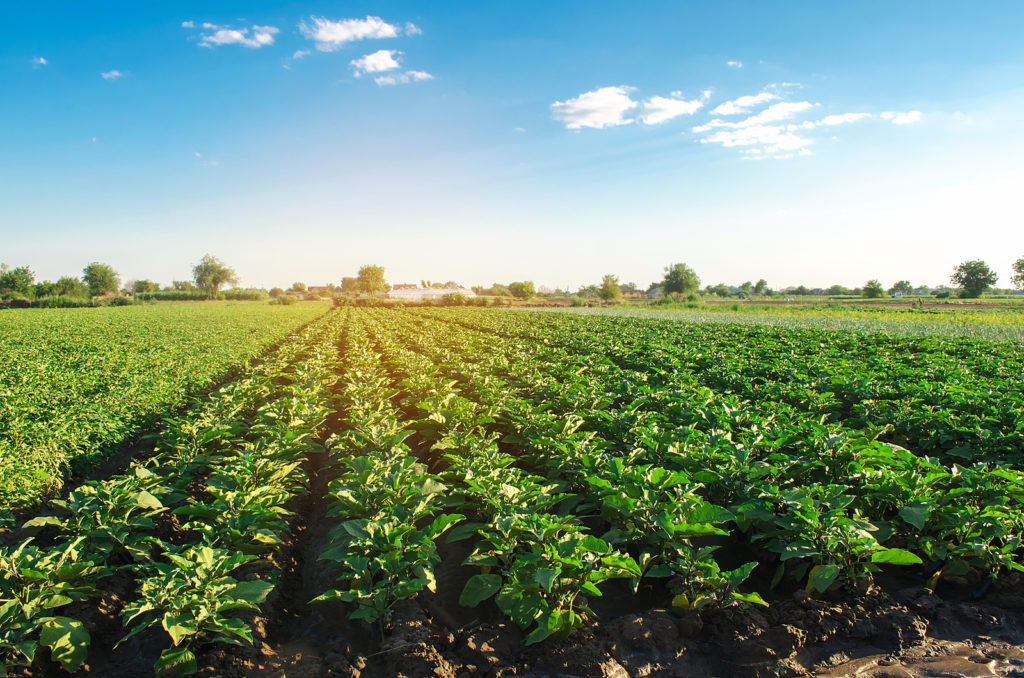Those working in the field of agricultural and food engineering solve problems concerning power supplies, machine efficiency, the use of structures and facilities, pollution and environmental issues, and the storage and processing of agricultural products. They also apply their knowledge of engineering technology and science to agriculture and the efficient use of biological resources. Some engineers specialize in areas such as power systems and machinery design, structural and environmental engineering, and food and bioprocess engineering. They develop ways to conserve soil and water and to improve the processing of agricultural products. Those involved specifically with food engineering are responsible for ensuring the safe and efficient processing, packaging, and delivery of food globally.
What makes it unique? This field of engineering supports the growth and distribution of the world’s food and agricultural systems. While practices vary globally, this is an area where engineering and innovation leads to safer and better nourishment for all the world’s creatures!
 Degree Connections
Degree Connections
The following are examples of some accredited degrees leading to a career in agricultural and food engineering:
- Agricultural Engineering
- Food Engineering
- Agricultural Engineering Technology
- Processing Engineering
- Biological Systems Engineering
- Bioresource Engineering
- Forestry Engineering
- Mechanical Engineering
Search our global database of accredited engineering programs.
Want to learn more?
Click on the blue tabs to explore the field in more detail and learn about preparation and employment, the green tabs to be inspired by people working in agricultural and food engineering and how they impact the world, and the orange tabs for ideas on how to learn more and you can get involved with activities, camps, and competitions!
Explore
A Day in the Life
Agricultural engineers work in farming, including aquaculture (farming of seafood), forestry, and food processing. For example, they might be working to develop a new climate control system to increase the comfort and productivity of
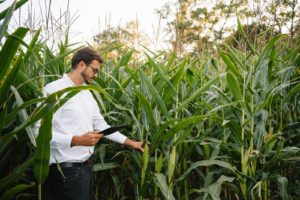
bigstock.com/ sedrikfoto
livestock. Or, they might be working to develop a better animal waste disposal system. Or, they might be working on improving the efficiency of pesticide or fertilizer application patterns, or determining a way to improve a harvesting system. Food engineers might be working to automate an egg packaging facility with a system to sort and determine the weight of each egg package.
With all these varied tasks, these engineers might be working in an office setting some of the time, or could be visiting a manufacturing or distribution facility, or walking in a field of corn to gauge how a new irrigation system is helping a farmer to improve his yield.
Historical Snapshot
The Combine Harvester:
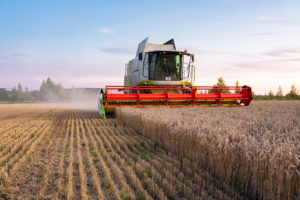
Aleksandr Rybalko
The modern combine harvester has boosted efficiency for farmers all around the world when it is time to harvest a crop. The machine is very versatile and gets its name because it combines four separate harvesting operations—reaping, threshing, gathering and winnowing—into a single process. It is used when harvesting a range of crops such as wheat, rice, oats, rye, barley, corn (maize), sorghum, soybeans, flax (linseed), sunflowers and canola.
The invention was originally pulled by horses but tractor-drawn combines became popular after World War II when farms began to use tractors. The time savings and consistency of crop harvesting was enormous! Because combine harvesters have saved humanity a lot of work, they are recognized as a major engineering invention of the global industrial revolution.
IN 2017 a family owned farming operation in the US set two Guinness World Records by harvesting 1111 tons of maize in eight hours and then 1620 tons in 12 hours using a Claas Lexion 760 Terra Trac combine harvester with a 16-row corn front. Can you imagine how much time that would have taken with people and a horse?
Explore more technical details:
Industries and Employment
Agricultural engineers work across several industries, but most are related to the growing of food and its processing, packaging and distribution. This means they work around the globe…and even in space as the international space station needs to provide food for astronauts too!

bigstock.com/ DedMityay
They also work on teams related to developing alternative energies and biofuels, improving and automating farming equipment, and irrigation systems. As the world population increases, there is more demand for efficiency in food production, which makes this field valuable all around the world.
Agricultural engineers can find employment around the world in government and research facilities, as well as national agricultural government departments. The following is just a sample of some companies, outside of government, so you can explore the type of projects worked on globally:
Preparation and Degrees
For most engineering careers:
- a bachelor’s degree is required
- a master’s degree may be recommended for those specializing or interested in management
- students may also start with a related associate degree and then move on to a bachelor’s when they have settled on a degree path.
- many students are required to participate in a co-op program while at university to gain real world experience in their chosen field.

- education doesn’t really stop…engineers need to stay current as technology changes and materials and processes improve over time.
- many professional societies offer certificates and coursework to support continuing education for their members.
Students specializing in agricultural engineering will learn to integrate engineering analysis and design with biology to address challenges in the production, processing, packaging, and distribution of diverse agricultural products. It requires knowledge of a range of subjects which may include field machinery design, soil science, plant physiology, avian biology, engineering hydraulics, and entomology.
There is overlap with other engineering fields. For example, mechanical and environmental engineering skills are required for some jobs in agricultural engineering. Mechanical engineering skills such as product design are useful in the creation of farm machines, and environmental engineering skills will assist someone working on wastewater management in farming.
Students who specialize in food engineering combine basic principles of engineering (fluid mechanics, heat transfer, and mass transfer) and math and science. They will complete advanced courses in food chemistry, microbiology, food processing operations, and engineering design.
It is important to select an engineering degree that has been accredited to meet basic standards. Find out more and browse TryEngineering’s global database of accredited engineering and computing programs.
Be Inspired
Amazing Engineers!
One of the best ways to explore what it might be like to work in agricultural or food engineering is to learn about people currently working in the field.

bigstock.com/Daria Arnautova
- Clarence Birdseye changed the way the world eats by developing a patented Quick Freeze Machine. This allowed food to be frozen which increased shelf life and allowed for other applications such as frozen dinners. He leased refrigerated boxcars to distribute frozen foods and was instrumental in developing the freezer display cases you see in grocery stores today.
- John Dorrance is considered the father of condensed soups. He was inspired by seeing the vast consumption of soup in Europe and experimented until he developed condensed soups. By requiring customers to add water, he was able to reduce the size of shipping containers thereby boosting profitability and also reducing the amount of space needed to display his soups on store shelves.
- Daniel Farkas did research that helped food scientists gain a greater understanding of food preservation using ultra-high-pressure techniques that killed bacteria and pathogens without affecting taste, texture, color, or nutritional value.
Global Impact
Agricultural engineering has had a global impact through the development of irrigation systems which have helped the growth of crops which have saved people from starving around the world.
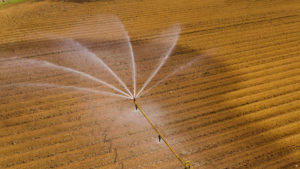
bigstock.com/Alexpunker
Irrigation brings water to crops through engineering solutions such as pipes, canals, sprinklers, underground tubing, or other ways. In places where there isn’t sufficient rainfall, or where an unexpected drought places crops at periodic risk, man-made systems can save crops and help feed people living nearby. It allows a food source to be more reliable.
While historically many civilizations have found ways to reroute rivers or store water, more recent engineering advances have incorporated technology and sensors to make systems more efficient. For example, sensors can determine exactly how much water is needed in a field, rather than a farmer estimating the need over many acres or relying on weather forecasts. More control over a crop can help improve yield as well and produce a bigger crop to feed more people in a shorter period of time.
Find out more:
Get Involved
Keep Learning
Dig deeper into topics related to agricultural engineering that interest you!
Explore:
- Journal of Agricultural and Food Engineering
- What Does a Food Engineer Actually Do?
- TryEngineering News Blog: New sensors can detect bacterial contamination of packaged foods
Watch:
Try it Out:
- Play some games that involve engineering!
- Try one of the TryEngineering lessons that focus on agricultural engineering: Planting with Precision
Competitions and Events
Clubs, competitions, and camps are some of the best ways to explore a career path and put your skills to the test in a friendly-competitive environment.
Clubs:
- Many schools have 4-H clubs or organizations where students can learn about farming practices, equipment, and food production. This is a great way to get some early agricultural engineering experience. 4-H also offers summer programs related to agriculture and civic engagement.
- A gardening club will provide some pre-university experience in plant growth experiments and challenges.
Competitions:
- Many universities have poster competitions for undergraduate students related to the subject they are studying. Some of these are available online. Check to see if a university is offering any poster sessions related to agricultural or food engineering and see what the students are working on! An example from University California Davis is here.
Camps:
- TryEngineering Summer Institute, US: Attend the TryEngineering Summer Institute to further your core engineering skills.
- Many universities offer summer engineering experiences. Reach out to your local university’s engineering department to see what they offer, and if any are focused on agriculture. Universities offering agricultural or food engineering will be more likely to offer summer engineering experiences in this field.
Local Connections
Did you know you can explore agricultural engineering in your community? Consider the path from farm to table for one or two products you like to eat.
-

bigstock.com/ DebbieG823
Where is rice grown? How is it grown? How does engineering assist with the growing and harvesting of rice? How is rice sold and packaged? What is the shelf life and is it enhanced in any way?
- Consider carrots. Where are they grown? Is there a local farm that sells carrots? What environmental challenges does this farmer face? Can they grow carrots year round in your area? If not, how do they extend the growing season where you live? How do they harvest carrots? How are the sold? If you wanted to order 1000 carrots, where do you think you would have to buy them from?
- Milk is a product that requires animal care, processing, a process to help the milk retain freshness, and a speedy and safe way to delivery to local or regional areas. What impact do you think engineering has had on bottling milk? Some milk containers are opaque while some are in glass bottles. Why did engineers recommend opaque containers in some instances? Why would that make a difference?
Find out more:
- Milk Bottling system by SMF Germany
- Robot ‘duck’ could help Japanese rice farmers keep paddy fields clear of weeds. You can watch a video of it working here!
- BBC: A staple food to withstand disaster
-
Groups and Associations
Be sure to reach out to professional societies focused on agricultural engineering where you live. Not all will offer membership to pre-university students, but most offer groups for university students, and certainly offer online resources to help you explore the field.
A nice example is ASME FutureME, a member-based community tailored to early career engineers (millennials, graduate students and young professionals with 0-10 years of work experience).
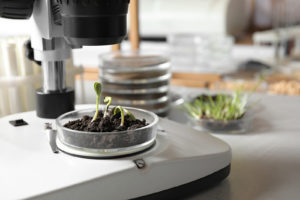
bigstock.com/ New Africa
Some examples of groups focusing on agricultural and food engineering:
Some resources on this page are provided or adapted from the US Bureau of Labor Statistics and the Career Cornerstone Center.



